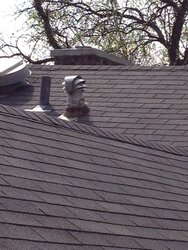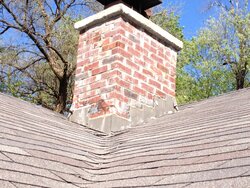Jo191145
Burning Hunk
Sounds like a much better idea than backfilling it with mortar which is more common.
Your brick was cracking from the inside because water was able to find its way through the crown and then froze and busted.
Beleive it or not somewhere in the code books is a diagram calling for flues to be grouted solid on three sides leaving the fourth side open for air between flue and chimney against the house. Guess they assumed all chimneys were exterior.
As a mason I can't think of a worse idea than that. Pretty much guarantees a chimney fire will pop off that unsupported side of the flue. That's one code I never incorporated into my work.
The biggest problem with sealing chimneys is wear. The sealent will wear/degrede at the top first due to the most contact with weather. Then water is allowed in and the rest of the structure cannot breathe. JMO.



